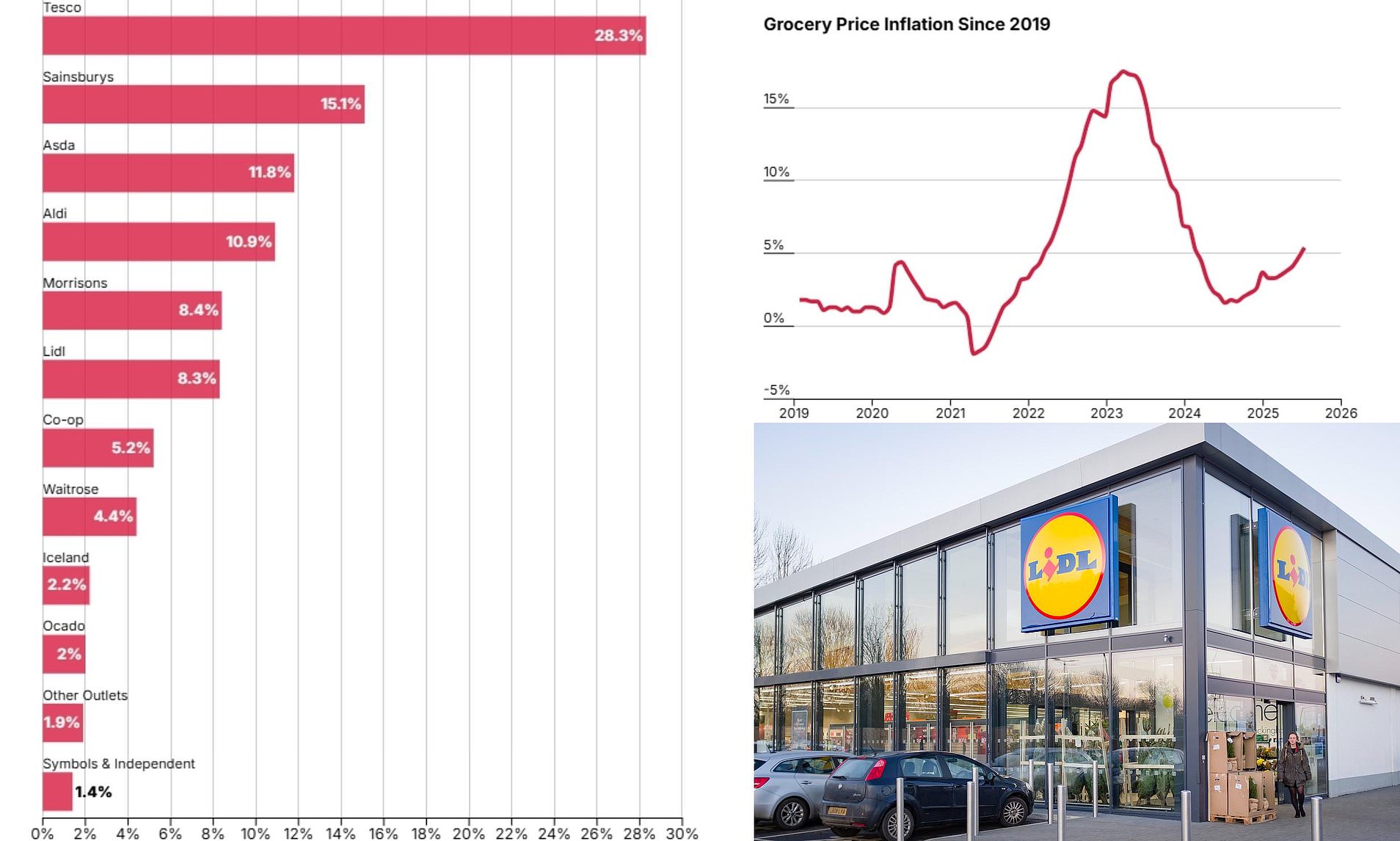
Rising Grocery Bills and Shifting Consumer Habits in the UK
British shoppers are facing a significant increase in their annual grocery expenses, with an average rise of £275 due to accelerating inflation. This trend has led many families to adapt their shopping habits, opting for simpler meals and own-brand products to manage costs more effectively. The latest data reveals that grocery price inflation has reached an 18-month high, driven by rising prices for items like fresh meat, chocolate, butter, and spreads.
Despite these challenges, some supermarkets have seen strong performance. Lidl, Aldi, and Tesco have emerged as winners, with Lidl achieving a record market share of 8.3% and attracting over 500,000 new customers. Tesco also performed well, boosting its market share to 28.3% and recording a sales growth of 7.1%, the fastest rate since December 2023. Sainsbury’s and M&S also reported positive results, with sales increasing by 5.3% and 6.5%, respectively.
The data highlights a broader trend in the UK grocery market. Total grocer sales increased by 4.6% year-on-year, with individual supermarket performances varying. For example, Asda saw a decline in market share, while Aldi managed to grow its sales by 6.3%. Ocado continued to outperform, with sales rising by 11.7%, significantly higher than the overall online market growth rate of 5.7%.
Consumer Behavior and Adaptation
Fraser McKevitt, head of retail and consumer insight at Worldpanel, noted that nearly two-thirds of households are very concerned about the cost of groceries. Consumers are adapting by choosing cheaper own-brand products and simplifying their meal preparations. Sales of own-label products grew by 5.6%, outpacing branded products, which saw a 4.9% increase.
This shift in behavior is not only affecting what people buy but also how they prepare their meals. Many are opting for simpler dishes with fewer ingredients to save money. According to recent research, almost seven in ten dinner plates now include fewer than six components.
With the average household spending £5,283 annually on groceries, the current inflation rate could add an additional £275 to their bills if shopping habits remain unchanged. Supermarkets are responding by introducing innovative products and services to keep consumers engaged. For instance, the drinks aisle has seen a surge in popularity, with iced coffee sales rising by 81% and kombucha sales more than doubling in the last four weeks.
Trends in Beverage and Food Sales
Low and no-alcohol drinks have also gained traction, with about 7% of households purchasing such products this month, driving a 21% increase in sales. Meanwhile, ice cream and sorbet sales soared by 33% as temperatures rose, and champagne or sparkling wine sales increased by 9%.
The Wimbledon tennis tournament also had a noticeable impact on consumer behavior, with strawberry and cream sales rising by 28% and 16%, respectively. These trends reflect how seasonal events and changing preferences can influence grocery purchases.
Broader Economic Context
The grocery price inflation figure is based on comparisons of over 75,000 identical products purchased by British shoppers. This data aligns with broader economic indicators, including the Office for National Statistics (ONS) report showing UK inflation reaching a near 18-month high in June. Annual food price inflation hit its highest level since February 2024, with transport costs also contributing to the overall rise in living expenses.
As inflation continues to affect households, the grocery sector remains a key area of focus. Supermarkets are leveraging innovation and consumer insights to maintain customer loyalty and drive sales. With ongoing price pressures, the ability to adapt and meet evolving consumer needs will be crucial for the future success of the industry.


Posting Komentar